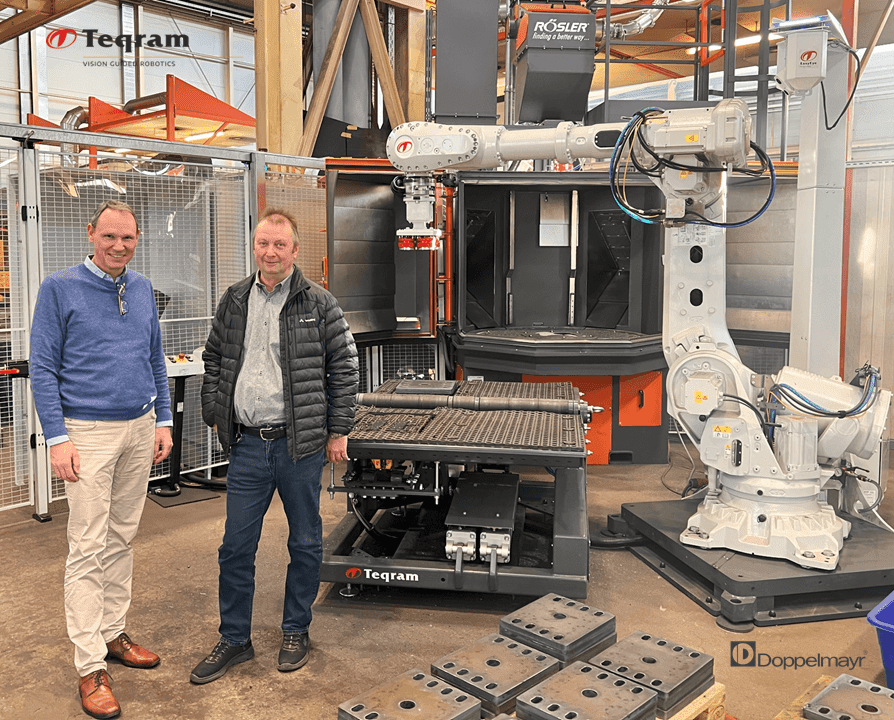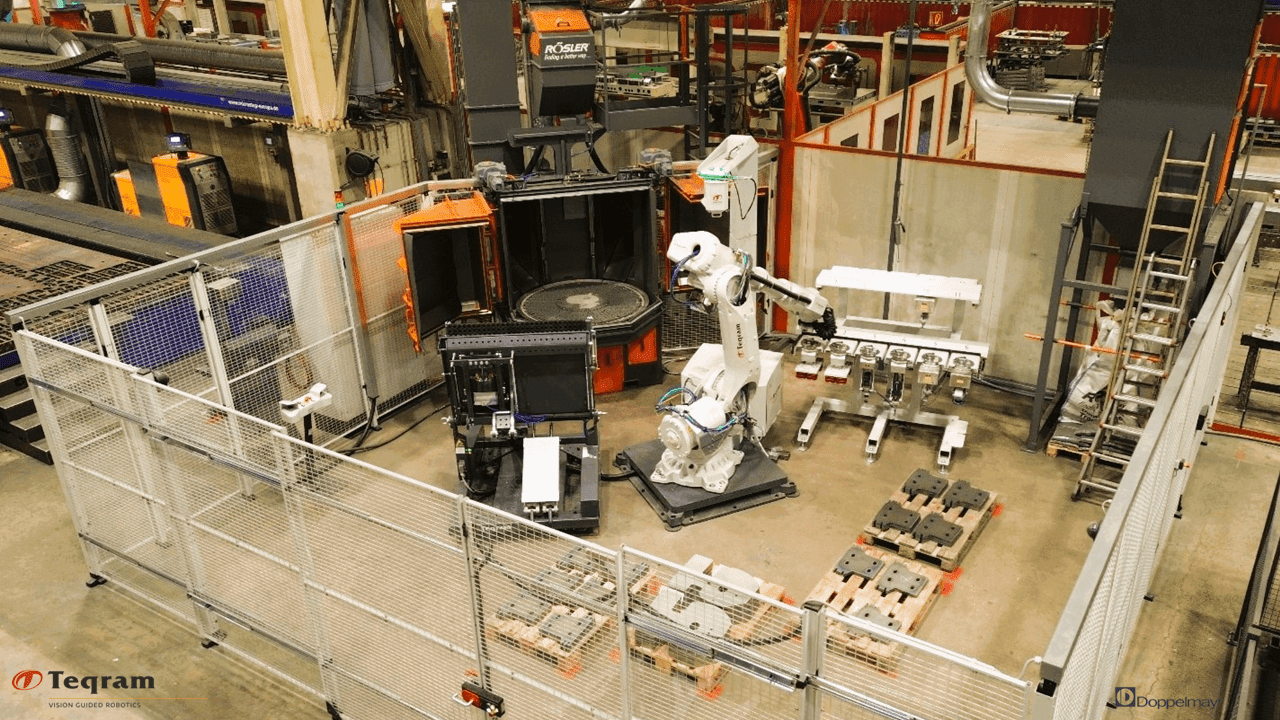
The Doppelmayr Group, a manufacturer of ropeway technology, which is used to transport people and goods by cable, is streamlining the grinding and blasting of plasma and flame cut parts with the introduction of Teqram's EasyGrinder autonomous robot.
The robot, which will process parts ranging from ½ to 2½ inch in thickness, operates automatically, eliminating the need for programming or complex teaching.
Each year, more than 16,500 tons of sheet metal parts are produced at Doppelmayr’s Wolfurt site in Austria. Previously, these parts were manually cleaned by in-house personnel and external contractors before being shot-blasted in a wire mesh belt blast machine. Now, the EasyGrinder automates this process for components up to 48” x 32” and 440 lbs, significantly increasing efficiency.

"Automation was a necessary step to address the growing shortage of skilled workers, reduce throughput times, and improve efficiency," said Walter Eberle, deputy production manager at Doppelmayr until February 2025. In addition to boosting productivity, the EasyGrinder enhances workplace safety by minimizing the risk of injury associated with manual part finishing.
How it works
The EasyGrinder automatically recognizes component geometries and selects the optimal processing parameters based on predefined recipes. It removes slag, breaks edges, and can optionally round them to a 0.08” radius. It also eliminates cutting starting points, chamfers holes, and grinds cutting sides to remove the hardened heat-affected zone.

The robot efficiently loads the rotary table blasting system to ensure a uniform, clean surface before restacking the processed parts onto pallets. Employees only need to place pallets with raw parts into the work area—everything else is fully automated.
To make the most of the EasyGrinder’s capacity, larger batches are processed overnight, ensuring continuous operation. During the day, the system focuses on smaller batches. The employees have welcomed the new system. "The EasyGrinder takes over physically demanding and hazardous tasks while delivering precise, repeatable results around the clock," said a production worker.
With this investment, Doppelmayr once again demonstrates its commitment to innovation, leveraging state-of-the-art technology to enhance efficiency, safety, and cost-effectiveness. The EasyGrinder marks a significant step toward the future of automated manufacturing.
Vision guided robotics
Teqram develops and supplies fully autonomous robot systems for loading and unloading deburring, levelling, and shot blasting systems, as well as for deslagging, grinding, and deburring sheet metal parts.
Equipped with the advanced EasyEye 3D vision system and AI-based controller, Teqram's robots operate fully autonomously. They automatically recognize pallets, stacks, and product geometries, eliminating the need for manual programming.
Contact Details
Related Glossary Terms
- grinding
grinding
Machining operation in which material is removed from the workpiece by a powered abrasive wheel, stone, belt, paste, sheet, compound, slurry, etc. Takes various forms: surface grinding (creates flat and/or squared surfaces); cylindrical grinding (for external cylindrical and tapered shapes, fillets, undercuts, etc.); centerless grinding; chamfering; thread and form grinding; tool and cutter grinding; offhand grinding; lapping and polishing (grinding with extremely fine grits to create ultrasmooth surfaces); honing; and disc grinding.
- heat-affected zone
heat-affected zone
That portion of the base metal that was not melted during brazing, cutting or welding, but whose microstructure and mechanical properties were altered by the heat.
- vision system
vision system
System in which information is extracted from visual sensors to allow machines to react to changes in the manufacturing process.
